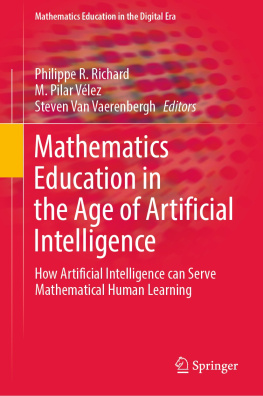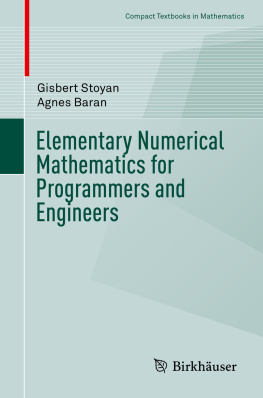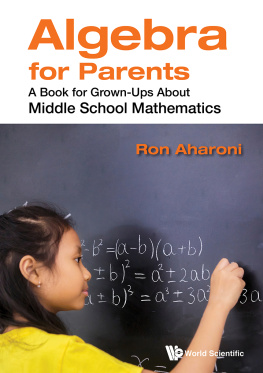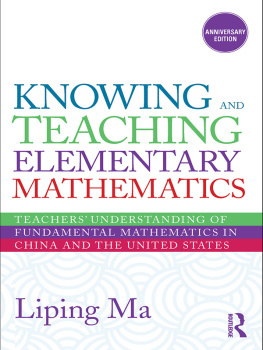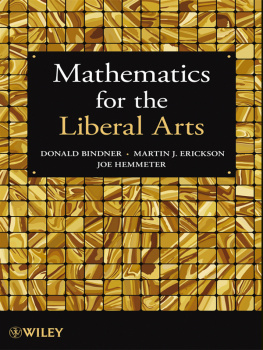WHAT IS MATHEMATICS?
WHAT IS Mathematics?
AN ELEMENTARY APPROACH TO
IDEAS AND METHODS
Second Edition
BY
RICHARD COURANT
Late of the
Courant Institute of Mathematical Sciences
New York University
AND
HERBERT ROBBINS
Rutgers University
Revised by
IAN STEWART
Mathematics Institute
University of Warwick

Oxford University Press
Oxford New York
Athens Auckland Bangkok Bogot Bombay
Buenos Aires Calcutta Cape Town Dar es Salaam
Delhi Florence Hong Kong Istanbul Karachi
Kuala Lumpur Madras Madrid Melbourne
Mexico City Nairobi Paris Singapore
Taipei Tokyo Toronto
and associated companies in
Berlin Ibadan
Copyright 1941 (renewed 1969) by Richard Courant;
Revisions copyright 1996 by Oxford University Press, Inc.
First published in 1941 by Oxford University Press, Inc.,
198 Madison Avenue, New York, New York 10016
First issued as an Oxford University Press paperback, 1978
First published as a second edition, 1996
Oxford is a registered trademark of Oxford University Press
All rights reserved. No part of this publication may be reproduced, stored in a retrieval system, or transmitted, in any form or by any means, electronic, mechanical, photocopying, recording, or otherwise, without the prior permission of Oxford University Press.
Library of Congress Cataloging-in-Publication Data
Courant, Richard, 1888-1972.
What is mathematics?: an elementary approach to ideas and methods
/by Richard Courant and Herbert Robbins.2nd ed. / revised by Ian Stewart.
p. cm. Includes bibliographical references and index.
ISBN-13 978-0-19-510519-3
1. Mathematics. I. Robbins, Herbert. II. Stewart, Ian, 1945-. III. Title.
QA37.2.C69 1996 510dc20 95-53803
15 17 19 18 16 14
Printed in the United States of America
on acid-free paper
DEDICATED TO
ERNEST, GERTRUDE, HANS,
AND LEONORE COURANT
FOREWORD
In the summer of 1937, when I was a young college student, I was studying calculus by going through my fathers book Differential and Integral Calculus with him. I believe that is when he first conceived of writing an elementary book on the ideas and methods of mathematics and of the possibility that I might help with such a project.
The book, What is Mathematics?, evolved in the following years. I recall participating in intensive editing sessions, assisting Herbert Robbins and my father, especially in the summers of 1940 and 1941.
When the book was published, a few copies had a special title page: Mathematics for Lori, for my youngest sister (then thirteen years old). A few years later, when I was about to be married, my father challenged my wife-to-be to read What Is Mathematics. She did not get far, but she was accepted into the family nonetheless.
For years the attic of the Courant house in New Rochelle was filled with the wire frames used in the soap film demonstrations described in , 11. These were a source of endless fascination for the grandchildren. Although my father never repeated these demonstrations for them, several of his grandchildren have since gone into mathematics and related pursuits.
No really new edition was ever prepared since the original publication. The revised editions referred to in the preface were essentially unchanged from the original except for a few corrections of minor errors and misprints; all subsequent printings have been identical to the third revised edition. In his last years, my father sometimes talked of the possibility of a major modernization, but he no longer had the energy for such a task.
Therefore I was delighted when Professor Ian Stewart proposed the present revision. He has added commentaries and extensions to several of the chapters in the light of recent progress. We learn that Fermats Last Theorem and the four-color problem have been solved, and that infinitesimal and infinite quantities, formerly frowned upon as flawed concepts, have regained respectability in the context of nonstandard analysis. (Once, during my undergraduate years, I used the word infinity, and my mathematics professor said, I wont have bad language in my class!) The bibliography has been extended to the present. We hope that this new edition of What Is Mathematics? will again stimulate interest among readers across a broad range of backgrounds.
Ernest D. Courant
Bayport, N. Y.
September 1995
What Is Mathematics? is one of the great classics, a sparkling collection of mathematical gems, one of whose aims was to counter the idea that mathematics is nothing but a system of conclusions drawn from definitions and postulates that must be consistent but otherwise may be created by the free will of the mathematician. In short, it wanted to put the meaning back into mathematics. But it was meaning of a very different kind from physical reality, for the meaning of mathematical objects states only the relationships between mathematically undefined objects and the rules governing operations with them. It doesnt matter what mathematical things are: its what they do that counts. Thus mathematics hovers uneasily between the real and the not-real; its meaning does not reside in formal abstractions, but neither is it tangible. This may cause problems for philosophers who like tidy categories, but it is the great strength of mathematicswhat I have elsewhere called its unreal reality. Mathematics links the abstract world of mental concepts to the real world of physical things without being located completely in either.
I first encountered What Is Mathematics? in 1963. I was about to take up a place at Cambridge University, and the book was recommended reading for prospective mathematics students. Even today, anyone who wants an advance look at university mathematics could profitably skim through its pages. However, you do not have to be a budding mathematician to get a great deal of pleasure and insight out of Courant and Robbinss masterpiece. You do need a modest attention span, an interest in mathematics for its own sake, and enough background not to feel out of your depth. High-school algebra, basic calculus, and trigonometric functions are enough, although a bit of Euclidean geometry helps.
One might expect a book whose most recent edition was prepared nearly fifty years ago to seem old-fashioned, its terminology dated, its viewpoint out of line with current fashions. In fact, What Is Mathematics? has worn amazingly well. Its emphasis on problem-solving is up to date, and its choice of material has lasted so well that not a single word or symbol had to be deleted from this new edition.
In case you imagine this is because nothing ever changes in mathematics, I direct your attention to the new chapter, Recent Developments, which will show you just how rapid the changes have been. No, the book has worn well because although mathematics is still growing, it is the sort of subject in which old discoveries seldom become obsolete. You cannot unprove a theorem. True, you might occasionally find that a long-accepted proof is wrongit has happened. But then it was never proved in the first place. However, new viewpoints can often render old proofs obsolete, or old facts no longer interesting. What Is Mathematics? has worn well because Richard Courant and Herbert Robbins displayed impeccable taste in their choice of material.


